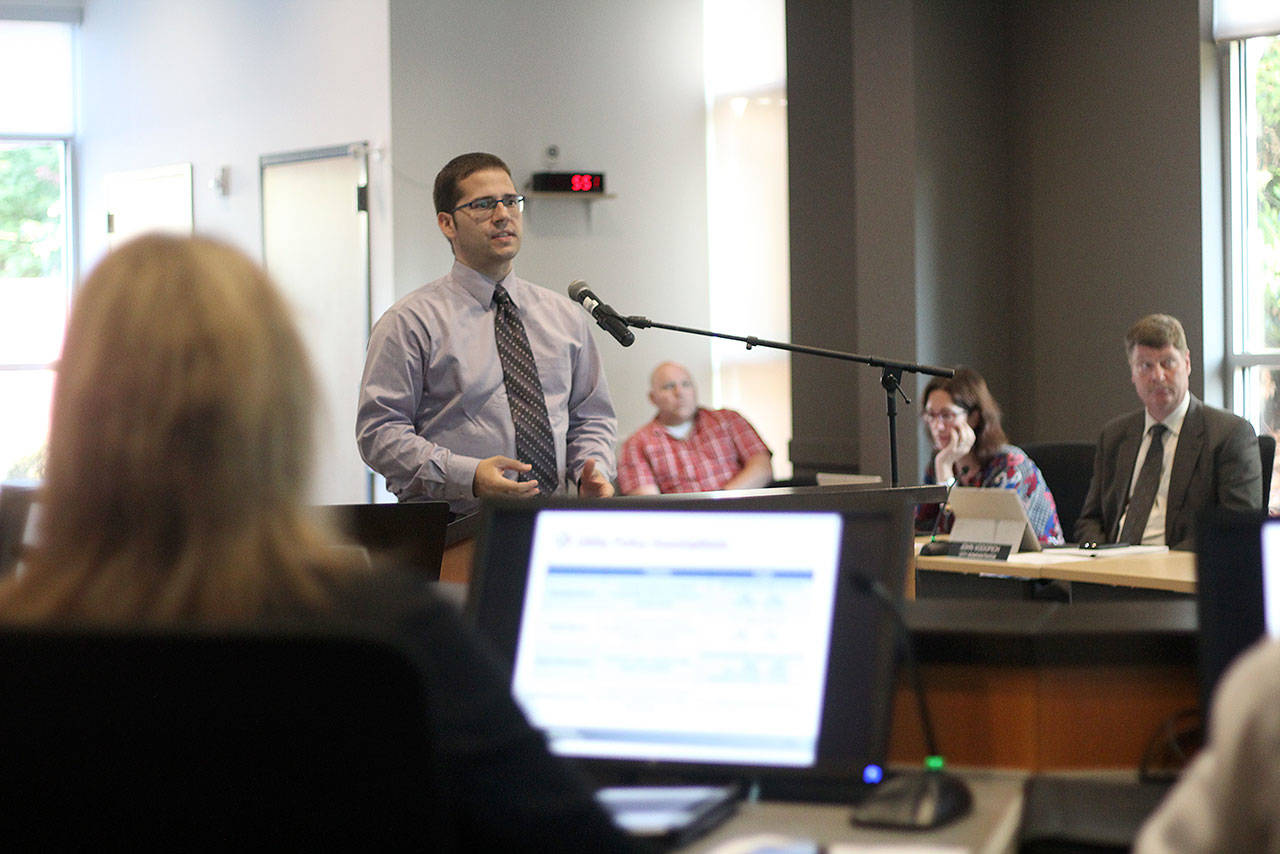Bonney Lake may finally be ready to raise its water and sewer rates after two years of discussions.
At the last city council meeting Aug. 28, Chris Gonzales, project manager for Financial Consultant Services Group — a company that for years has been studying the city’s utilities, necessary repairs and improvements to those systems, and the financial consequences the council faces — gave yet another recommendation for rate increases.
Previous recommendations, made spring 2017, would have raised the average water bill by around $13 a month by the end of 2022, and raised the average sewer bill by $25 a month.
However, council discussion was derailed October 2017 when residents complained of unusually high water bills, and the council and city staff spent the next three months performing an internal audit of the water utility, culminating in a February 2018 open house about the water and sewer utilities to educate the public about how money is spent and how rate increases are decided.
The engineering firm RH2, which has also been long-term partners with Bonney Lake, gave an updated Capital Facilities Project report in April 2018, re-evaluating what repairs and improvement projects are necessary. The council gave that report to FCGS, plus their own preferences in which projects need to be tackled when, which the new proposed rate increases reflect, said City Administrator John Vodopich.
According to Gonzales’ presentation, FCSG recommends Bonney Lake increase its water rates by 4 percent each year between 2019 and 2023, bringing the average water bill up by around $6 a month by the end of this five-year period.
This may hit residents’ wallets less than previous recommendations, but the proposed sewer rates may make up for that; FCSG is recommending Bonney Lake front-load its sewer rate increases with an 11.5 increase for 2019 and another 11 percent increase for 2020, plus an additional 2 percent rise in rates to cover inflation between 2021 through 2023.
This would increase the average sewer bill by about $28 a month by 2023.
Increasing the water and sewer rates would help pay for not only the day-to-day maintenance and operations of both utilities, but millions of dollars in repairs and improvements, some of which have been designated necessary by the state Department of Health.
The most expensive water capital improvement project is increasing Bonney Lake’s water storage capacity, which is expected to cost $11.2 million.
“Many years ago, we identified you had a storage deficiency, and every year, it gets worse,” RH2 principal engineer Geoff Dillard told the council when he presented the updated Capital Facilities Project report last April. “You’ve been fortunate enough not to have a fire when the tanks are empty. You’ve had empty tanks, but you haven’t had a fire. So you’re just being lucky.”
Other projects include the city’s water meter replacement program, increasing Bonney Lake’s water supply, and others, totaling nearly $22 million in capital project expenses through 2023.
Over on the sewer side of things, Dillard highly recommended the council allot money to increase Bonney Lake’s sewer collection system and lift station capacity, warning that ignoring even comparatively small improvements could lead to multi-million dollar lawsuits.
Increasing sewer main capacity is expected to cost around $3.5 million, and improvements to lift stations another $3 million. Additional projects bring the expected capital projects cost to around $11 million through 2023.
The Bonney Lake City Council quickly discussed the proposed utility rate increases during the Sept. 4 workshop.
Vodopich said what is being presented to the council is “the bare bones minimum,” and explained how city staff re-tooled these proposed increases by closely examining what projects the city absolutely has to do soon, and which can be put off.
“We’ve kicked the can down the road as far as we can, so to speak, and in order to finalize both our water and sewer comprehensive plans, we’re waiting on action on the rate increases, so that, in turn, consultants can finish those financial chapters and get those off to the Department of Ecology and Department of Health for approval,” Vodopich added.
The increased water rate didn’t garner much discussion, and it appears an ordinance will be on the table for action during a later council meeting.
The sewer rate increase, however, looks to still be up for debate.
Councilman Tom Watson has historically been wary of these utility increases, and though he was glad to see the water rate increase come down so low, he wants to make sure the proposed sewer rate is as low as it can be.
Councilman Dan Swatman disagreed, saying he feels uncomfortable approving utility rates that only cover the absolute minimum of projects and not any potential emergencies or other projects that may be completed less immediately, but are nevertheless important to finish soon.
Other council members concluded to look at the sewer plan again, sending it back to the Community Development Committee for discussion on September 18.
9/14/2018 CORRECTION: In the original print and online article, it was stated the water rate ordinance would be ip for a council vote during the Sept. 11 council meeting. The Sept. 11 meeting agenda was revised to not include the ordinance, which will now be voted on during a future meeting. The article has been edited to reflect this.


